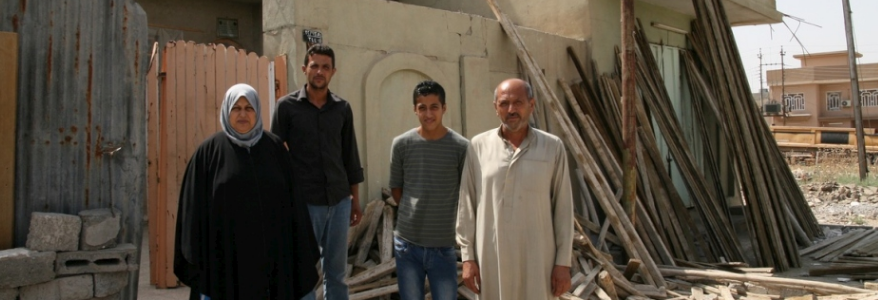As the battle for Mosul raged around them last year, Rabah Mahmoud Ali and his family were ejected from their home by armed militants.
After Iraqi forces took back control, they returned to find the roof and first floor of their house badly damaged by bombs, their possessions looted, and all the windows shattered.But determined to get their old life back, Ali borrowed some money and set a team of construction workers to repair the damage.
“I’ve got into debt because of all the building work,” he says. “But I am optimistic about the future.”
The Iraqi government declared victory in Mosul on July 9. The 58-year-old physics teacher is among tens of thousands of determined residents of Iraq’s battered second city who are heading home, reopening their shops and businesses and taking back their lives.
According to Iraqi government figures, 176,150 men, women and children were displaced from east Mosul after Iraqi forces launched an operation last October to retake the city. But since the troops took back control, nearly 90 percent of the displaced residents – or 157,341 people – have returned to their places of origin.
When militants seized Mosul in 2014, they began closing down or bringing schools under their control and implementing their own curriculum. Most parents pulled their children out altogether, fearing they would be indoctrinated by extremist influences – although now local schools are getting back to normal.
“We all hope and want Mosul to get back on its feet.”
Heavy fighting left many of the streets of West Mosul in ruins. But damage to the eastern part of the city was not as widespread. In the Al Khadra neighbourhood, the majority of families have moved back and are repairing or rebuilding destroyed properties and businesses.
A child walks through a neighbourhood of war damaged homes and shops in eastern Mosul. © UNHCR/Caroline Gluck
As a sense of normality returns to the area, the population has doubled, say staff from Mercy Hands for Humanitarian Aid, a protection partner for UNHCR, the UN Refugee Agency. Many of the new arrivals are families from western Mosul who chose to move in with relatives or friends in the east of the city, rather than move to displacement camps.
Among those sheltering in east Mosul is former restaurant owner Taysir Mohammed Mahmoud, who recently arrived with his wife, two children, brother and mother. Mahmoud said the family, originally from the Old City, had been used as human shields by militants, and were forced to move to another area where they lived with 10 other families in a basement for five months.
Many shops and markets in east Mosul have re-opened, including cafes advertising shisha pipes, furniture stores and hairdressers. On one street corner, a group of people had gathered at one site being repaired.
“We’re planning to rebuild four shops and our family house at the back. It will cost us a lot – maybe 200 million Iraqi dinars (US$170,000) – and we’ll get into debt; but there are five families in our extended family. We are scattered, living all over the place right now, but we want to come back here and live together. And we all need jobs,” 25-year-old Ayad Ahmed Ali.
Ali says the building work will likely take a few months. But, he believes efforts like this will send an important statement to extremist groups who once held sway.
“We all hope and want Mosul to get back on its feet,” he says. “What we are doing now is a signal, a challenge to extremists. We are determined to rebuild and fight their destruction.”
by Caroline Gluck
Source: UNHCR.
Posted on 10 July. 2017.


